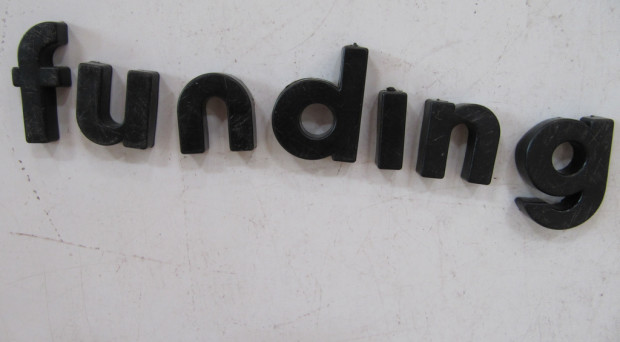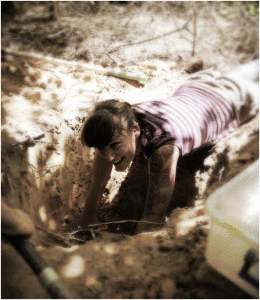
Charissa de Bekker has spent recent years probing the underpinnings of the ‘zombie ant’ model system, formerly as a post-doc in the lab of David Hughes at Penn State and now as an Alexander von Humboldt Research Fellow at LMU Munich.
Her latest research was published last month in BMC Genomics. An unusual aspect of the study is that it was partly financed through donations from the general public via the crowdfunding platform Experiment.com.
Here Charissa discusses her experiences in financing her research through this novel avenue.
Can you briefly outline what your research involved?

I am very interested in learning how certain parasites can change their host’s behavior in order to increase their chances of transmission. To study the aspects in play, I use the zombie ant system as a model. Here, ants get infected by a fungus of the genus Ophiocordyceps, which slowly changes the ant’s behavior. Ultimately the fungal parasite guides the ant out of the nest to climb up the vegetation where it latches on a couple of hours before death.
Though the natural history of this and other manipulating parasite-host interactions have been well described, we do not know a whole lot yet about the molecular mechanisms underlying the phenomenon of manipulation. Therefore, in our crowd-funded study we investigated the gene expression during manipulated biting behavior in ants infected with Ophiocordyceps.
We found that a large part of the fungal genes that are up-regulated during this biting event are not present in the genomes of other insect-infecting parasites. This suggests that there is something very specific about the ability of these fungi to induce this biting behavior.
Among these up-regulated fungal genes were those that putatively encode for proteins with reported effects on behavioral outputs, involved in neuropathologies and involved in secondary metabolite biosynthesis. We also found that the parasite might be regulating the ant’s immune- and neuronal-stress responses, cause apoptosis, and impair its chemosensory communication.
What made you decide to try crowd-funding to finance this part of the project? Had you already tried more conventional funding sources?
It’s no secret that it is hard to find funding for fundamental, risky research projects into systems that have not been established yet. Especially if this research is being proposed by an early-career researcher and there are no preliminary results that show the funding committee that you are already halfway towards your research goal.
I was lucky enough to land an EU Fellowship to pursue my research interests, however the research budget could not cover all the ideas I wanted to explore. Obtaining a transcriptomics dataset would push my research into the right direction but eat up most of the budget making it more difficult to reach some of the other project goals. That’s when I decided to try and find a more creative way to get the funds to establish this important dataset.
Supported by the Experiment.com team, I ran a crowd-funding campaign (you can find it here). On Experiment.com, in return for the support from the crowd, you promise to keep them updated on your progress and give people a ‘behind the scenes’ experience on the research you’re doing through online Lab Notes.
Next to the monetary motivation, I was very much drawn to this idea of sharing my research with people that are interested in hearing about it and might otherwise not get a look into the ‘scientific kitchen’. Who doesn’t want to get the opportunity to get the crowd excited about the research they’re passionate about, right?
If you do it, make the time and commit to it because money is not rolling in by itself
How did you decide on an amount of funding ($4500) to aim for?
I think if people decide to fund something out of their own pocket, they 1) have to get excited about the concept, and 2) will want to know what you’re exactly going to spend their money on. With that in mind, I sat down and budgeted what I would need to create the dataset that would push the rest of my research forward. And with that, would make it easier to get future funding.
Of course, I have plenty more ideas and there is most certainly more I could do with more money. But, instead of wanting it all at once, I decided to keep the proposed project small and the concept straightforward: if you’re interested like me in learning how certain parasites can create zombie-like behavior, you can help me get the first experiments done that will push my research in the right direction. And in return you’ll get to hear about the results first hand.
When setting up your project funding page, how difficult was it to communicate the aims of your research to a general audience?
It requires a different mindset indeed to drop the scientific jargon and still get the point across. Not just when setting up the funding page but also when trying to communicate the progress and the results.
I experienced it as a good exercise though to try and convey your ideas in such a way that for instance your aunt or someone you meet at a bar can understand what you’re doing and go “that’s pretty awesome!”, so it’s not just interesting for people who work within a certain field.

How did you go about promoting your project and attracting potential funders?
The money definitely did not come rolling in just like that and getting it fully funded indeed required a lot of work. I shared the project regularly through all kinds of social media (Twitter, Facebook, LinkedIn) in the hope it would eventually reach those that were interested in seeing it succeed.
During the campaign, I already started writing lab notes that provided a bit more detailed information about the project, the lab I worked in, what my colleagues were doing, and so on. I also made sure to thank each person that decided to back the project personally by sending them an email (I figured it was the least I could do). This motivated some to get involved themselves as well and share the project with their personal networks.
Furthermore, I wrote to several science journalists and bloggers asking if they would be interested in covering the project. This got the ball rolling as well and eventually certain media outlets started to pick up on the project independently.
Last but not least, I also did an iAmA (stands for “I am a” and AMA stands for “ask me anything”) on Reddit about the project, which resulted in me frantically trying to answer the many questions people had about the project and behavioral manipulation in general. It was great to see the discussion unfold itself and other scientists jumping in as well to comment.
Over 100 people backed your project. What do you know about these people?
The majority of the very first backers were indeed friends and family. They provided the necessary initial numbers that got the ball rolling. The rest of the backers are interested members of the public, fellow scientists from related but also completely unrelated fields, medical doctors, college students and even a Mycological Association, which collectively donated as a group.
They are a pretty interactive bunch that ask great questions, comment on the lab notes, and take the time to send messages to congratulate on new publications and such!
Will you use this avenue to seek funding for future projects?
Overall, I think this was a very positive experience so I would definitely do it again.
Final question – what would be your best piece of advice to other scientists considering financing their research via crowd-funding?
Do it! But if you do it, make the time and commit to it because money is not rolling in by itself. See it as a chance, not only to get funding, but also to get your enthusiasm and passion for what you do across to others, build out your network and improve your communication skills. This way you’ll get something positive out of it, regardless the outcome.
We’ve helped promote a number of crowdfunded “community genome” projects (see the Azolla, Cactus and Kittybiome posts in GigaBlog https://blogs.biomedcentral.com/gigablog/tag/crowdfunding/), and will be hosting a session next month at the upcoming International Conference on Genomics covering this very topic https://www.icg-10.org/navigation/show_navigation?nid=10116#S6